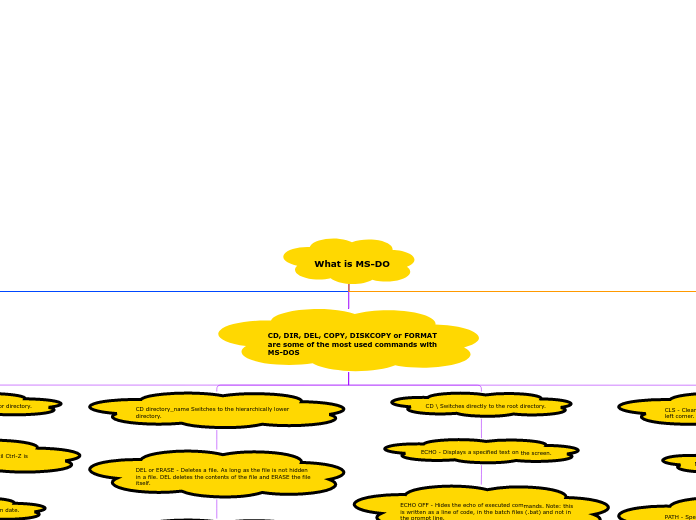What is MS-DO
MS-DOS stands for Microsoft Disk Operating System. It was very popular for a long time and, although it was progressively replaced by the different versions of the ubiquitous Windows, it is still installed on most PCs.
CD, DIR, DEL, COPY, DISKCOPY or FORMAT are some of the most used commands with MS-DOS
CD.. Switches to the hierarchically superior directory.
COPY CON - Copies to a file the text typed until Ctrl-Z is pressed.
DATE - Changes or displays the system date.
PROMPT - Changes the command display line.
SuREM - Allows you to insert comments in batch files.
CD directory_name Switches to the hierarchically lower directory.
DEL or ERASE - Deletes a file. As long as the file is not hidden in a file. DEL deletes the contents of the file and ERASE the file itself.
DIR - Shows a list of files and directories (folders) that are in a directory on the disk.
SubtRD or RMDIR - Deletes a directory that is completely empty. opic
VOL - Shows the hard disk label and volume (if any)
CD \ Switches directly to the root directory.
ECHO - Displays a specified text on the screen.
ECHO OFF - Hides the echo of executed commands. Note: this is written as a line of code, in the batch files (.bat) and not in the prompt line.
REN or RENAME - Rename files and directories.
TIME - Display or change the time of the internal clock.
VER - Shows the Operating System version.
CLS - Clears the screen and returns the cursor to the upper left corner.
MD or MKDIR - Creates a new directory.
PATH - Specifies paths, in which the operating system looks for executable files. This is a command that is usually written in the Config.sys and in batch process files.
SET - Assign values to environment variables.
TYPE - Display the contents of a file. It is mainly used to view file contents in text format.
